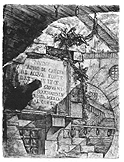on campus
Of course: Celestial reasonings
 ILLUSTRATION: TZIGANE
ILLUSTRATION: TZIGANE
| |
Every few weeks, clouds and weather permitting, Cliff Burgess and a group of his students meet on the rooftop of the Rutherford Building, clasping thermoses of warm liquid. Why? To watch the stars and planets.
For there on the rooftop are four magnifying telescopes allowing a few of the 250 students in the Planets, Stars & Galaxies course to get close to some of the celestial bodies they study in class.
At this time of year, the constellations Orion, the Big Dipper, the North Star and Cassiopeia are readily found in the sky, Burgess notes, as well as the planets Jupiter and Saturn, and the students are required to measure the movement over time of three stars and one planet.
Burgess is a professor of physics but this course isn't open to students in his specialty, only to students in other branches of science and in the arts.
His is a hands-on kind of course. Or feet-off, as it were. Burgess, demonstrating the principle of the "conservation of angular motion" —which affects how a spinning cloud of gas (mostly helium and hydrogen) gets compressed into a star — sits in front of the class in a chair holding a spinning bicycle wheel laterally. When he turns it over, so it is still spinning laterally but in the opposite direction, his chair starts to turn in the original direction, with no help from his feet.
When he turns it back to the original position he stops and when he reverses the spinning wheel once again, his chair, magically, it seems, resumes rotating. The class is suitably impressed.
Burgess, who last year helped identify a supernova which exploded 640 light years ago, hopes his students will come away from this course "with a familiarity and an appreciation of the beauty of the night sky." He also hopes "they will appreciate the beauty of the scientific method which permits us, ultimately, to understand the nature and history of the universe."
Good with their hands
 PHOTO: ANDREW DOBROWOLSKYJ
PHOTO: ANDREW DOBROWOLSKYJ
| |
There are machinists and technicians in the physics machine shop who think many young people spend too much time at the computer and not enough time making things with their hands and, of course, with machines.
But they were impressed by a group of students from Marianopolis College who made extensive use of the shop — and the McGill workers' expertise — to prepare their robotic hockey player for the annual Canada First competition, recently held in Hamilton. The judges were impressed too; the team of nine finished first overall, taking the prize for nine of the 14 categories.
For Steve Kecani, fellow machinist Eddie Del Campo, technicians Mario Della Neve, Kathy Farrow and Michel Champagne, as well as professional associate Leo Nikkenen, the motivation for giving up an evening or a Saturday to work with the students had to do with the pleasure of working with those who still thrill at the creation of something with their own hands.
It also has to do with continuity, promoting McGill and believing that working with machines is good for students. "These are potential McGill students," says Kecani, a 30-year veteran of McGill who tries to make the shop as accessible as possible to all students. "Many of these [Marianopolis] students will come here." More than 50 percent of Marianopolis graduates end up attending McGill.
One such student is Tina Chen who so impressed Kecani with her skills in the shop that he has hired her for the summer. Chen, a first year pure and applied science student at the college, "had no clue" of her affinity for machines. "I was really into computers, but now I'm considering physics or mechanics. This really opened me up to other possibilities."
On the subject of continuity, the reason the physics shop has this rapport with Marianopolis is thanks to PhD (physics) graduate Rocco Iafigliola who went on to teach at the CEGEP and used his contacts in the shop to give his students experience in the real world.
A book by its cover

| |
For those who love to judge a book by its cover, its artwork, typography or the quality of paper, there is an exhibit at the Redpath Library that is made for you. Until March 27, two journals, 47 books and 32 book jackets will be on display, forming the 1999 AAUP Book, Jacket, and Journal Show.
McGill Queen's University Press is a member of the American Association of University Presses and its production and design manager, Susanne McAdam, welcomes this annual event. The judging of entries from the continent's 100 university presses is one of the few opportunities to have book design criticized and recognized.
Most years, McAdam enters one book for each of the four to five freelance designers working for the press. This year, David Drummond's jacket design for The World of the Gift, by Jacques T. Godbout, took a prize.
"The use of colour is sophisticated. The scale is effective in transforming an otherwise over-used, copyright-free engraving into a fresh image. We see this stuff used all the time, but rarely with such bravado," wrote the judges in the exhibit catalogue.
People at the press and invited designers had an opportunity to handle the books before they went under glass. Joan McGilvray, the press's coordinating editor, relished the chance. "Those wealthy university presses do such beautiful colophons," she says, explaining that the colophon is a note on the design and materials used in the production of the book.
Up close with Piranesi

| |
Unbeknownst to many in the University, McGill is one of the few universities in the world to have the second edition of Opere Varie (Various Works) by Giovanni Battista Piranesi in its collection.
Thanks to the foresight of a former director of the School of Architecture, Ramsay Traquair, (1874-1952), McGill owns one of only three copies known to exist of the influential printmaker's compilation of five suites of etchings. Princeton University and the British Library have the other two.
What is so important about the book is the artist's evocative images of ancient Rome, says Myra Rosenfeld, scholar in residence in the Rare Books and Special Collections Division, who in early April will be giving a talk on the artist. The Opere Varie had a "profound influence" on such architects as Charles de Wailly and Jacques-Germain Soufflot and painters like Richard Wilson and Jean-Honoré Fragonard, writes Rosenfeld in a piece about the work.
Furthermore, this particular edition of the book includes traces of Piranesi's own hand on 11 of the etchings where the artist tried to add shadows to his original designs etched in the wax on top of the copper plate. This characteristic of McGill's edition makes it the most important of the three, according to Andrew Robison, of the National Gallery of Art in Washington, who examined the book after it was rediscovered by former McGill art historian Carol Kiefer in 1992.
Piranesi (1720-1778), considered one of the founders of Neo-classicism, trained as an architect in his native Venice but spent the better half of his life as a printmaker in Rome. "He had a Venetian's vision," says Rosenfeld. "There is light, shadow, bold contrasts and shimmering in his etchings."
By His Own Hand: Piranesi's Visionary Images of Ancient Rome and the Significance of the McGill Copy of the Opere Varie, will be presented by Myra Rosenfeld, Tuesday, April 11, at 6 pm in the Lande Reading Room on the fourth floor of McLennan Library. Space is limited and reservations must be made before April 1 at 398-4711.
on the move
Mr. Karl Jarosiewicz, formerly a web editor in the University Relations Office, has moved to the new Web Communications Group where he is the managing editor. Jarosiewicz is responsible for coordinating and integrating McGill's central web-based publishing efforts, and publishes the McGill Gateway web site.
Mr. Eric Smith has also left the URO to join the Web Communications Group. Smith is the WCG's web systems designer. He designs the McGill Gateway and related web systems, and develops tools that support web publishing at McGill. Together with Jarosiewicz, Smith won a gold medal from the Canadian Council for the Advancement of Education for best university web site last year.
Mr. Sylvain-Jacques Desjardins is the URO's new communications coordinator. A frequent contributor to the McGill Reporter, Desjardins has also written for The Gazette, The Globe and Mail, University Affairs and Concordia's Thursday Report. Desjardins is a graduate of Concordia University's School of Journalism.

